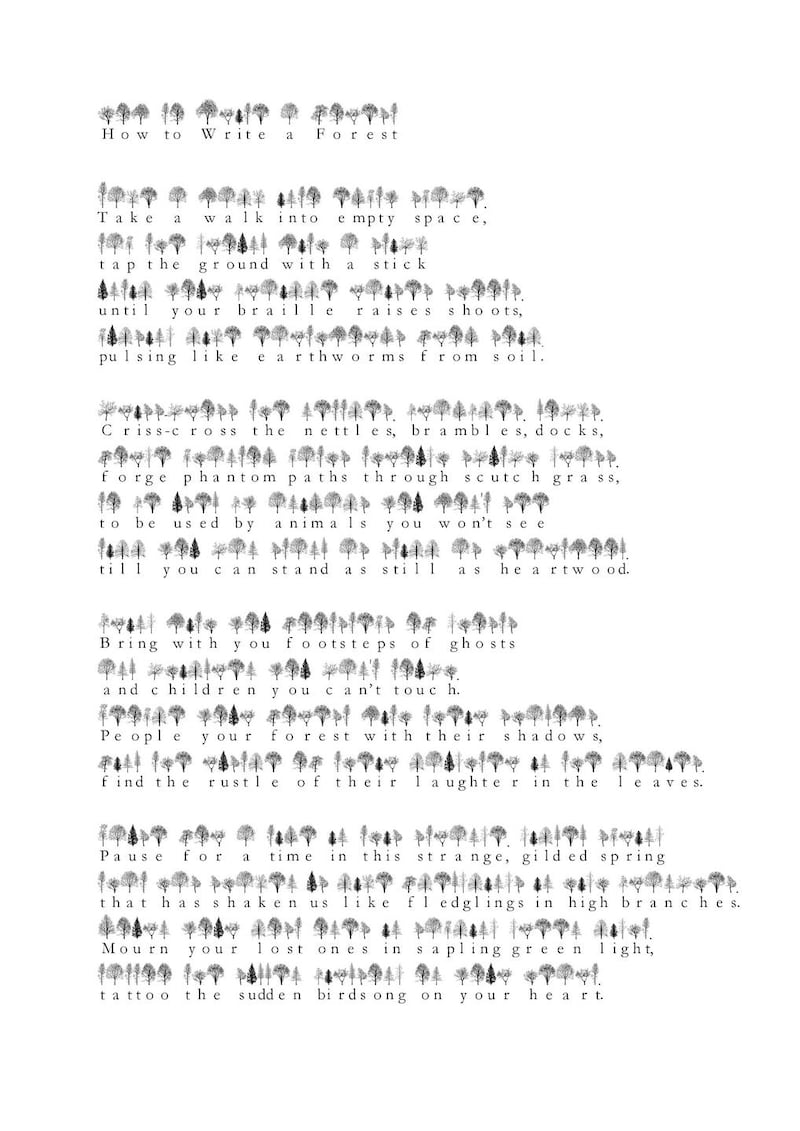In the middle of March, the skies cleared as the world closed down. I took to walking each day in the forest – or, rather, the arboretum in St Anne’s Park. It’s large enough to look wild from certain angles; if you twist and turn through the paths made by joggers; if you duck through gaps in the bushes.
This trick of perspective is made easier by seeing things through the eyes of Abigail, my two-and-a-half-year-old daughter, who comes exploring with me. By ignoring paths and cutting across playing fields, the only people we see are distant, bright, like deer feinting away from us. This hour and a half each afternoon where we lose ourselves in leaf-light and cherry blossom is what I live for now.
Back in the first week in March, I had met Emma Lucy O’Brien, the director of the Visual, in Lennon’s Café in Carlow to talk about possible collaborations as part of my writing residency in Carlow. The following week, while I was in Brazil, the first lockdown measures were put in place in Ireland, and the nine months of work I had lined up began to evaporate.

After the initial shockwave, the creative industries in Ireland, already used to kicking against the pricks, responded quickly. One of the first people to be in touch again was Emma, with the suggestion that I work with visual artist Katie Holten to create something for the people of Carlow. Katie had been working on an exhibition for the Visual, which would now have to be postponed.
I was trying to finish my residency in Carlow via the useful, but depressingly distant, medium of Zoom. Emma asked Katie and me to work together to create a poem that would be translated into Katie’s tree alphabet, then printed and distributed in the post to 3,000 people in the Carlow area. It would be a keepsake of sorts – something physical to hold onto in a troubled and troubling time.
We all wanted our response to be quick, so as soon as I got the go-ahead, I started working. I’ve been doing a lot of teaching on Zoom, and although the sessions have been fun, there is always an underlying sadness that threatens to spill over into the work we are producing.
In my poem I wanted to mark and honour that sadness, but I also wanted to give a gift. And what better gift than the forest I had created with my daughter by wandering the outskirts of a suburban park? It seemed serendipitous in the extreme that I’d also been given the gift of working with Katie, an artist whose work explores the fragility and interconnectedness of humanity and nature, and whose tree alphabet turns poems into forests.
I'd like to dedicate this poem to the writers who have worked with me on my Carlow residency, who have entrusted me with their own writing in this turbulent time. And with the shock of Eavan Boland's death reverberating around me today as I write this, I plant a final tree in this poem-forest; dedicate it to her.
How to Write a Forest is a collaborative writing project by poet Jessica Traynor and visual artist and activist Katie Holten, commissioned by VISUAL Carlow and Carlow County Council Arts Service. It will be printed in a limited edition of 3000 and distributed to communities and front line workers in Co Carlow this May.

















